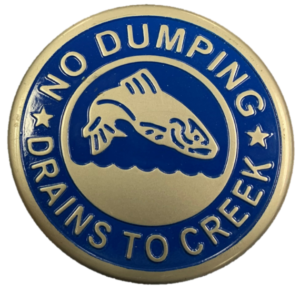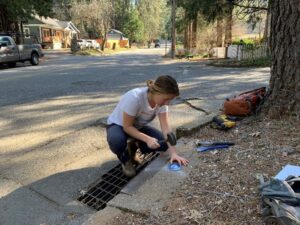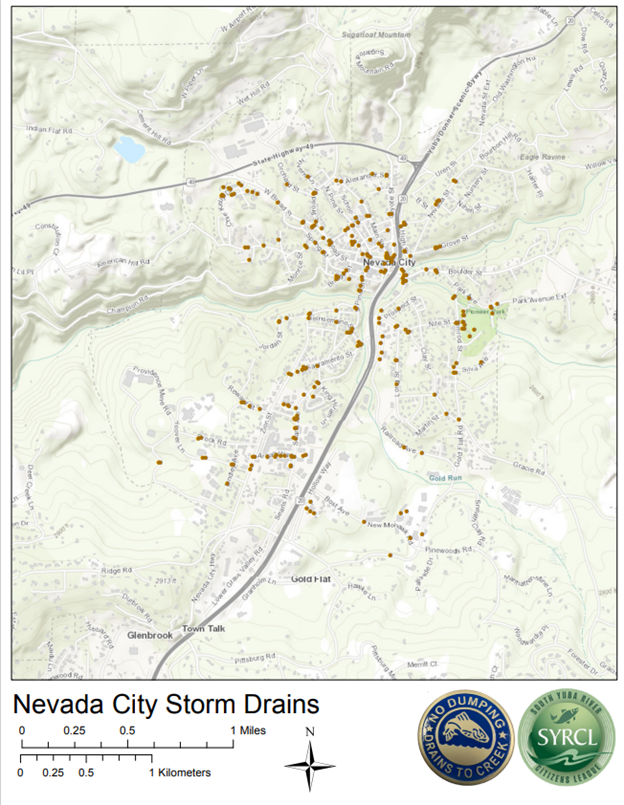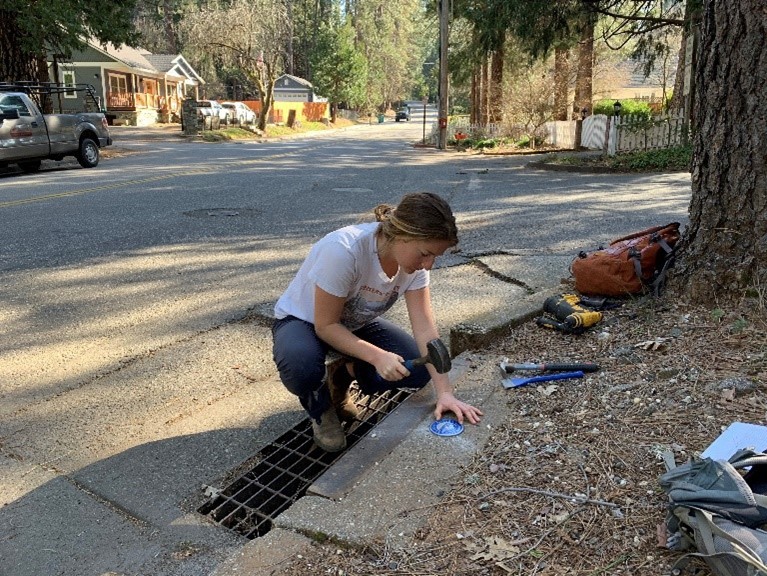Where Does Our Water Go?
Where does the water from all of our rain and snow events go? Read below to find out more about where it ends up and what SYRCL is doing to raise awareness.
What are storm drain markers and why are we installing them?

Storm drains are essential for diverting rainwater and melted snow off of streets and other paved surfaces. Importantly, though people cannot see where these drains lead, the water that runs into them typically ends up in a natural body of water such as a creek or river. In the case of Nevada City, the storm drains divert the water directly into Deer Creek and do not pass through a water treatment facility beforehand. This means that any unnatural waste dumped down these drains ends up in our local waterway. By marking these storm drains, we hope to deter any unwanted pollutants to Deer Creek and the Yuba River further downstream.
Water Quality Monitoring Program
The installation of these drains is a part of our River Monitoring Program, which has been collecting and logging water quality data throughout our watershed for 21 years in an effort to restore and protect the waterways. The data we collect provides a scientific basis that is essential to the management of the watershed. Our water quality program follows a River Monitoring Plan that articulates different investigation areas that are of question or concern. This includes the investigation of nutrient and chemical runoff. The installation of the storm drain markers directly addresses the importance of discouraging unwanted dumping, thus contributing to our nutrient and chemical runoff investigation area.

Local Contribution
In addition to helping prevent dumping practices throughout the city due to a lack of understanding where storm water goes, SYRCL’s efforts in locating and installing storm drains has enabled us to provide Nevada City with a detailed map of their storm drain locations. This map can help determine and identify where storm runoff is being diverted. Hopefully, this map can also be useful in encouraging future city development projects to be more environmentally friendly and conscientious of protecting water quality.
Preventing Pollution
If you are wondering how you can reduce stormwater pollutants, here are a few ways to help:
- If you use any herbicides or lawn chemicals, always follow label instructions and never apply before rain or watering unless directed.
- Recycle used oil. Never place used motor oil in the trash or down storm drains. Dispose of used oil at a used oil collection facility.
- Clean driveways, sidewalks or paved areas around your home. Remove debris or residue that could end up in the storm drain.
- Wash your car the right way. Bring your vehicle to a car wash that filters wastewater and avoid washing your car in the driveway where soap can easily run in the street.
- Never dispose of trash or chemicals directly in the storm drain. at are

Did you enjoy this post?
Get new SYRCL articles delivered to your inbox by subscribing to our ENews.



